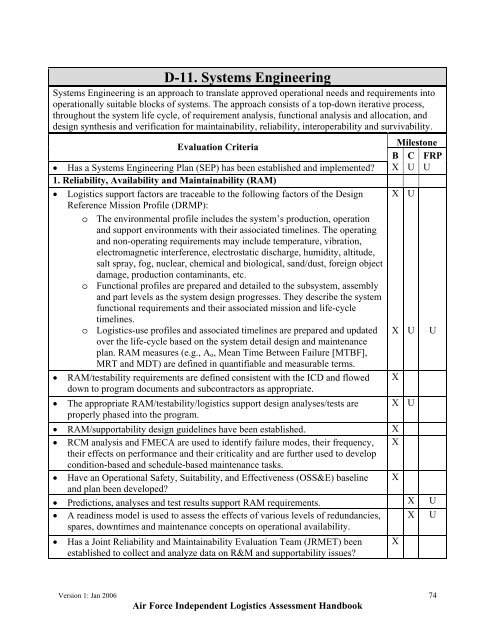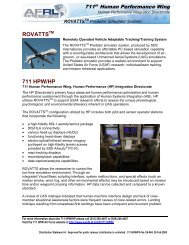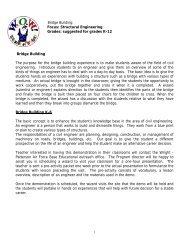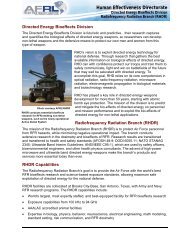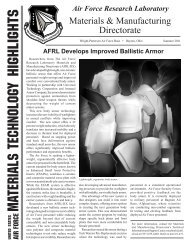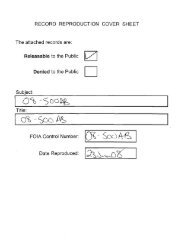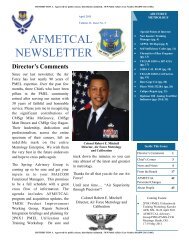USAF ILA Handbook - ACC Practice Center - Defense Acquisition ...
USAF ILA Handbook - ACC Practice Center - Defense Acquisition ...
USAF ILA Handbook - ACC Practice Center - Defense Acquisition ...
Create successful ePaper yourself
Turn your PDF publications into a flip-book with our unique Google optimized e-Paper software.
D-11. Systems Engineering<br />
Systems Engineering is an approach to translate approved operational needs and requirements into<br />
operationally suitable blocks of systems. The approach consists of a top-down iterative process,<br />
throughout the system life cycle, of requirement analysis, functional analysis and allocation, and<br />
design synthesis and verification for maintainability, reliability, interoperability and survivability.<br />
Evaluation Criteria<br />
Milestone<br />
B C FRP<br />
• Has a Systems Engineering Plan (SEP) has been established and implemented X U U<br />
1. Reliability, Availability and Maintainability (RAM)<br />
• Logistics support factors are traceable to the following factors of the Design X U<br />
Reference Mission Profile (DRMP):<br />
o The environmental profile includes the system’s production, operation<br />
and support environments with their associated timelines. The operating<br />
and non-operating requirements may include temperature, vibration,<br />
electromagnetic interference, electrostatic discharge, humidity, altitude,<br />
salt spray, fog, nuclear, chemical and biological, sand/dust, foreign object<br />
damage, production contaminants, etc.<br />
o Functional profiles are prepared and detailed to the subsystem, assembly<br />
and part levels as the system design progresses. They describe the system<br />
functional requirements and their associated mission and life-cycle<br />
timelines.<br />
o Logistics-use profiles and associated timelines are prepared and updated X U U<br />
over the life-cycle based on the system detail design and maintenance<br />
plan. RAM measures (e.g., A o , Mean Time Between Failure [MTBF],<br />
MRT and MDT) are defined in quantifiable and measurable terms.<br />
• RAM/testability requirements are defined consistent with the ICD and flowed X<br />
down to program documents and subcontractors as appropriate.<br />
• The appropriate RAM/testability/logistics support design analyses/tests are X U<br />
properly phased into the program.<br />
• RAM/supportability design guidelines have been established. X<br />
• RCM analysis and FMECA are used to identify failure modes, their frequency, X<br />
their effects on performance and their criticality and are further used to develop<br />
condition-based and schedule-based maintenance tasks.<br />
• Have an Operational Safety, Suitability, and Effectiveness (OSS&E) baseline X<br />
and plan been developed<br />
• Predictions, analyses and test results support RAM requirements. X U<br />
• A readiness model is used to assess the effects of various levels of redundancies, X U<br />
spares, downtimes and maintenance concepts on operational availability.<br />
• Has a Joint Reliability and Maintainability Evaluation Team (JRMET) been<br />
established to collect and analyze data on R&M and supportability issues<br />
X<br />
Version 1: Jan 2006 74<br />
Air Force Independent Logistics Assessment <strong>Handbook</strong>


